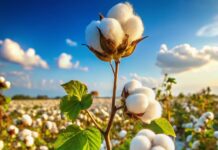Cotton jerseys and pullovers (HS-611020) rank among the most imported apparel items worldwide, owing to their versatility, comfort, and consistent year-round demand. These lightweight and breathable garments are well-suited for various climates, making them popular casual wear across diverse demographics. In the United States, the demand for cotton jerseys and pullovers is particularly high, as they meet both seasonal fashion trends and everyday comfort needs. Fibre2Fashion’s analysis delves into the effects of tariff increases and evolving trade dynamics among competing countries in the U.S. market, identifying nations likely to benefit from China’s potential market decline due to heightened tariffs.
Vietnam: A Leader with Competitive Challenges
Vietnam has emerged as the leading exporter of cotton jerseys and pullovers, boasting a significant comparative advantage with a Revealed Comparative Advantage (RCA) of 4.48. However, its unit value realization (UVR) falls within the mid-range, making its products widely accessible. Despite this advantage, Vietnam faces challenges from lower-priced competitors like Bangladesh and China. Additionally, Vietnam does not benefit from preferential tariff treatment, with cotton jerseys primarily subject to Most Favored Nation (MFN) tariffs in major importing countries. Consequently, Vietnam’s higher UVR could hinder its competitiveness in the face of cheaper alternatives.
China: Rising Tariffs Threaten Cost-Effectiveness
As the second-largest exporter of cotton jerseys and pullovers, China currently holds the lowest UVR at $10.54/kg, alongside a modest RCA of 1.02. This low UVR underscores China’s position as a dominant supplier of affordable cotton jerseys, thanks to its extensive production capabilities and economies of scale.
The initial tariff imposition on February 4, 2025, raised China’s tariff rate to 15%. This increase in tariffs is expected to elevate the UVR, pushing it to around $11.59/kg, thereby challenging China’s traditional low-cost advantage. A second tariff increase on March 4, 2025, will further raise the rate to 25%, likely increasing the UVR to $12.65/kg or higher. However, due to its inherently low UVR, China may still manage to maintain competitive pricing, despite the tariff burden.
Cambodia: Positioned for Growth
Cambodia is set to be a significant beneficiary of the U.S. tariffs on Chinese exports. While its UVR is comparable to that of Vietnam, Cambodia’s considerably higher RCA positions it favorably in the global market for cotton jerseys and pullovers. This strong RCA indicates a competitive edge, enabling Cambodia’s textile industry to capitalize on shifting trade dynamics. As costs rise and trade restrictions impact China, Cambodia is likely to focus on expanding its production and exports in this category, utilizing its cost advantages and preferential trade agreements to enhance its market standing.
Bangladesh: The Leading Contender
Bangladesh stands to be the foremost beneficiary in this reshaped trade environment, demonstrating the highest RCA of 27.36 and the lowest UVR at $14.86/kg. This combination indicates Bangladesh’s strong specialization in cotton jersey and pullover exports, allowing it to offer significantly lower prices than many competitors.
With competitive pricing, Bangladesh primarily faces competition from China, which is expected to suffer from the impact of increased tariffs. This scenario positions Bangladesh to capture additional market share as global buyers look for cost-effective sourcing options. Its well-established textile infrastructure, duty-free access to essential markets through various trade agreements, and a skilled labor force further bolster its role as a dominant player in the cotton jersey segment.
Indonesia: Challenges from High UVR
Though Indonesia maintains a strong RCA of 7.1, it grapples with the challenge of a high UVR. The cost of its cotton jerseys is approximately 1.9 times higher than those from China, limiting its competitiveness in price-sensitive markets. This elevated UVR suggests that production costs—potentially influenced by higher labor wages, raw material expenses, or lower economies of scale—are driving up export prices. Consequently, Indonesia may find it difficult to compete with cost-effective suppliers like China and Bangladesh in mass-market segments. However, this premium pricing could indicate a focus on higher-value or niche markets where quality, sustainability, or branding are critical. To strengthen its competitive position, Indonesia may need to explore cost optimization, trade agreements, or product differentiation strategies.
Future Outlook
Bangladesh is poised to emerge as a major player in the U.S. cotton jersey and pullover market, thanks to its low UVR of $14.86/kg and high RCA of 27.36. With the additional tariffs imposed on China, Bangladesh’s cost-effective pricing strategy positions it as an attractive alternative for U.S. buyers seeking affordable cotton jerseys. Its competitive pricing, reinforced by duty-free access to key markets through various trade agreements, enables Bangladesh to offer more appealing prices compared to rivals. Given its growing textile infrastructure and skilled labor force, Bangladesh is predicted to capture a larger market share, particularly in price-sensitive segments, solidifying its status as a dominant force moving forward.
Despite the 25% tariff on China, its lower UVR of $12.65/kg will help it maintain a competitive edge, especially in price-sensitive markets. While the higher tariffs increase costs, China’s extensive production capacity and economies of scale will mitigate much of the impact. As a result, China is likely to retain its position as a leading exporter of cotton jerseys and pullovers, even as some cost-sensitive buyers begin to shift their demand to competitors like Bangladesh.






























